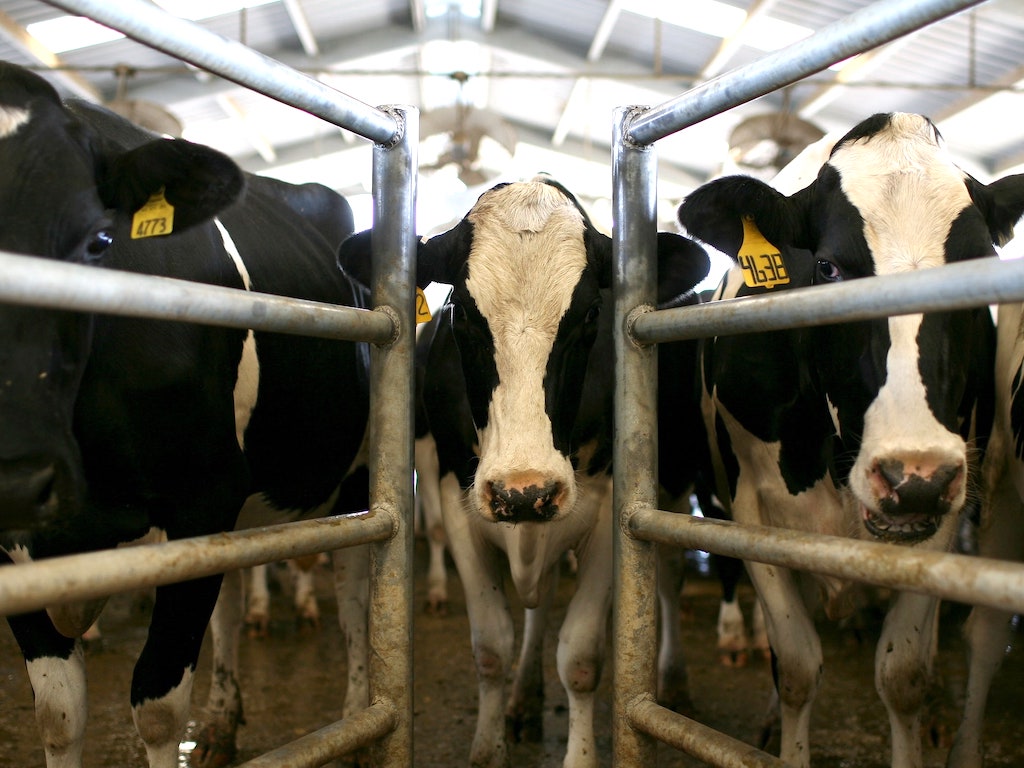7 Mins Read
The distance between the best diet for human and planetary health is shrinking.
What’s the healthiest diet? Ask a doctor or nutritionist and there will be overlaps, certainly—more fruits and vegetables, minimally processed foods. But beyond that, the recommendations will vary. But ask any climate scientist what the healthiest diet is for the planet, though, and, that answer is going to be relatively consistent: eat fewer animals and animal products, if any.
In its most recent dietary guidance suggestions—its first update in fifteen years—the American Heart Association recommended a sustainable as part of a heart-healthy diet.
The organization says concerns over carbon footprints have increased since its last update. And, it says, the basic principles of a heart-healthy diet are consistent with a sustainable diet: a focus on fruits, vegetables, plant-based proteins, and minimally processed foods.
Heart disease is a leading cause of death for men and women in the U.S., and dietary choices are the leading cause of heart disease-related deaths. A 2020 study found that six million deaths could have been prevented with healthier diet choices.
Sustainable diets cost less
Eating sustainably may also be better on your bank account. A study published last month by Oxford University found vegan, vegetarian, and flexitarian diets reduced grocery bills by as much as 33 percent.
The researchers looked at seven types of sustainable diets and compared those with standard diets in 150 countries based on the World Bank’s International Comparison Program.
“We think the fact that vegan, vegetarian, and flexitarian diets can save you a lot of money is going to surprise people,” Dr. Marco Springmann, researcher on the Oxford Martin Programme on the Future of Food, said in a statement.

According to the findings, vegan diets were the most affordable; pescatarian diets, often labeled sustainable but show an increased risk to the planet and human health—increased costs by 2 percent.
“When scientists like me advocate for healthy and environmentally-friendly eating, it’s often said we’re sitting in our ivory towers promoting something financially out of reach for most people,” Springmann said. “This study shows it’s quite the opposite. These diets could be better for your bank balance as well as for your health and…the planet.”
The researchers looked at scenarios that could improve the affordability of sustainably-minded diets. It found more access to lower-cost plant-forward diets over the next decade, particularly in low-income countries, promoted healthier diets, reduced food waste, and supported sustainability initiatives.
“Affording to eat a healthy and sustainable diet is possible everywhere, but requires political will,” said Springmann. “Current low-income diets tend to contain large amounts of starchy foods and not enough of the foods we know are healthy. And the western-style diets, often seen as aspirational, are not only unhealthy, but also vastly unsustainable and unaffordable in low-income countries. Any of the healthy and sustainable dietary patterns we looked at are a better option for health, the environment, and financially, but development support and progressive food policies are needed to make them both affordable and desirable everywhere.”
Processed foods: unhealthy, unsustainable
The Oxford findings and the American Heart Association’s recommendations overlap in a few key areas, namely the limiting of processed foods. There’s now more reason this may be a critical consideration.
Processed foods rely heavily on palm oil—a controversial, widely used crop cultivated across Southeast Asia, particularly Malaysia and Indonesia. Palm production has long been driving deforestation—the forests are clear-cut for palm plantations. According to the United Nations, the region loses about 300 football field size swaths of forest every hour to the palm industry. The forest destruction displaces threatened and endangered animals like orangutans who live in the forest treetops.
The industry is also responsible for significant greenhouse gas emissions (GHGs). Research from 2020 found that newer plantations, which are being added regularly, produce double the emissions of older operations.
The region’s GHGs account for the equivalent of half of all global aviation emissions, according to University of Nottingham Environmental Science associate professor Sofie Sjogersten.

“Our research investigated how the process of converting a peat swamp forest to a palm oil plantation contributes to global greenhouse gas emissions,” Sjogersten wrote last year. “We found that gas emissions resulting from the conversion of palm oil plantations in south-east Asia is up to 0.8% of total global greenhouse gas emissions. This is the equivalent of almost half that of global aviation emissions.
“Our team carried out field measures in a swamp in North Selangor, Malaysia. We wanted to know the amount and type of greenhouse gases released at different stages of the conversion process, from swamp to plantation. Knowing the type of greenhouse gas is important, as some have a greater effect on the climate than others. For example, nitrous oxide – which is produced by bacteria in soil – is nearly 300 times more damaging than carbon dioxide.”
Palm oil health risks
Palm oil has long been called out as unhealthy due to its high saturated fat content, which can be harmful to cardiovascular health. New research, though, says it may also encourage the spread of cancer.
The study identified palmitic acid as promoter of metastasis in mouth and skin cancers. It found a connection between palmitic acid and changes to gene function in cancer cells. This allowed the cancer cells to consume the fatty acids more efficiently and send the cells into a “regenerative state,” according to the researchers. This allowed them to form signaling networks linked to the spread of tumors.
“There is something very special about palmitic acid that makes it an extremely potent promoter of metastasis,” Prof Salvador Aznar-Benitah, of the Institute for Research in Biomedicine (IRB), Barcelona, said in a statement. “I think it is too early to determine which type of diet could be consumed by patients with metastatic cancer that would slow down the metastatic process.”
“This discovery is a huge breakthrough in our understanding of how diet and cancer are linked and, perhaps more importantly, how we can use this knowledge to start new cures for cancer,” Helen Rippon, chief executive at Worldwide Cancer Research, told The Guardian. “Metastasis is estimated to be responsible for 90% of all cancer deaths – that’s around 9 million deaths a year globally. Learning more about what makes cancer spread and – importantly – how to stop it is the way forward to reduce these numbers.”
Eating animals
Then, of course, there are animal products. Staples in virtually every culture in the world, whether meat, fish, poultry, eggs, or dairy—animal products have long been part of the human diet. But there are questions about the future of animal products on an increasingly warming planet. In recent decades, regions that were once minimal consumers have increased their consumption of animal products commensurate with economic growth. This increased demand has proliferated factory farming and overfishing—two leading contributors to climate change.
“A change in diet away from the most carbon-intensive food, such as beef, lamb and dairy, could drive down agricultural emissions, while freeing up land for other uses to increase carbon sequestration, such as tree planting,” Chris Stark, Chief Executive of the Committee on Climate Change, told Carbon Brief.
Stark says some of these changes are already underway via the introduction of plant-based substitutes, such as Beyond Meat, Impossible Burgers, and non-dairy milk, as well as investments into precision fermentation and cultivated meat.
“These products have a much lower emissions footprint than the animal-based originals,” Stark says.
What’s better for the planet here is better for human health, too—especially as it helps refocus our food system. “Healthy eating is not only about what you eat, but also about what you don’t eat. If you’re eating more fruits, vegetables, and whole grains, you’re probably eating less of other foods that aren’t as heart-healthy,” says Alice H. Lichtenstein, DSc, chair of the writing group for the American Heart Association statement and senior scientist and director of cardiovascular nutrition team at the USDA Human Nutrition Research Center on Aging at Tufts University in Boston.

According to Brent Kim, programme officer, food production and public health at Johns Hopkins Center for a Livable Future, without a shift away from animal foods, GHGs are likely to surpass 2050 targets. These concerns were echoed at COP26 by some of the world’s leading experts.
“The EAT-Lancet Commission on healthy diets from sustainable food systems established a target of 5bn tonnes of CO2 equivalent from food systems by 2050,” Kim told Carbon Brief. “The target assumes CO2 emissions will reach zero by 2050 and, thus, applies only to methane and nitrous oxide (N2O) emissions. The commission recommends a healthy, plant-forward diet, high in wholegrains, legumes, vegetables, fruits and healthy fats with a very modest amount of animal protein – about 300 calories worth, or only 12% of the recommended 2,500 calories.”
Sheril Kirshenbaum, associate food research scientist at Michigan State, says changing what we eat can significantly help reach climate targets without requiring new innovation.
“The new generation of plant-based meats have been engineered to taste, smell and even bleed like the real thing – without using the land, energy and water required for raising farm animals,” she told Carbon Brief. According to MSU research, Millennials and Gen-Z are already embracing sustainable plant-based foods en masse. They may be early adopters of cultivated meat, too, once available.
All of that, Kirshenbaum says, could inch us closer to climate targets, and optimal health.
“As we become increasingly thoughtful about our purchases at the grocery store, more informed about unnecessary sell-by dates and conscious of our personal and collective ‘foodprint,’ we have a real opportunity to inch ever closer toward climate targets,” she says.
Lead photo by Eiliv-Sonas Aceron on Unsplash



